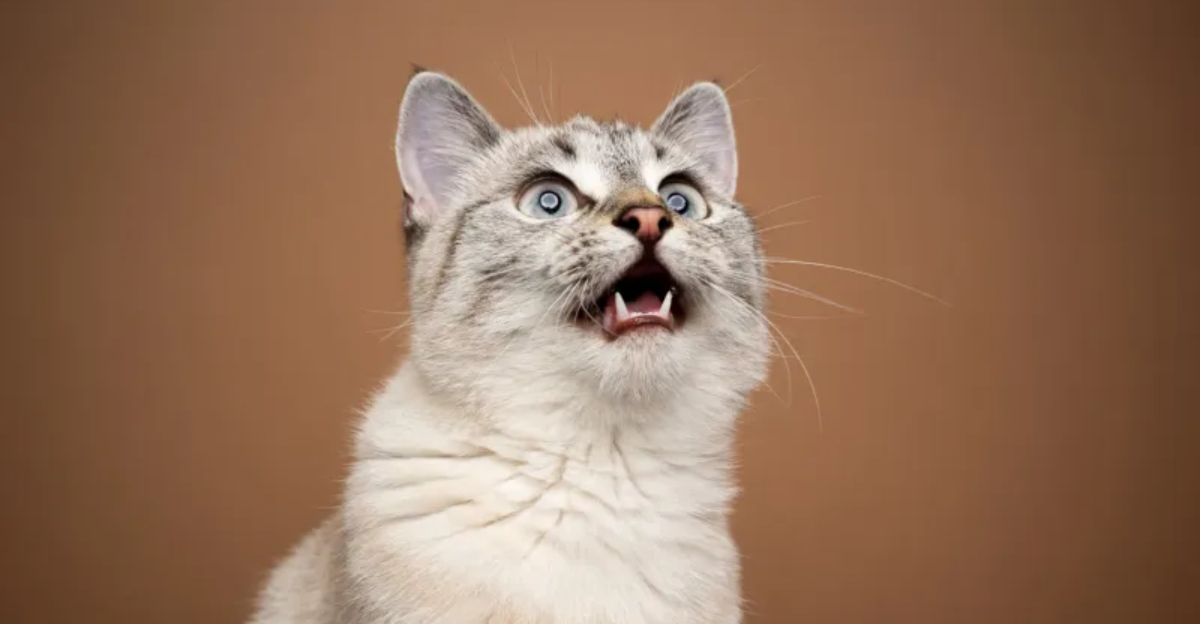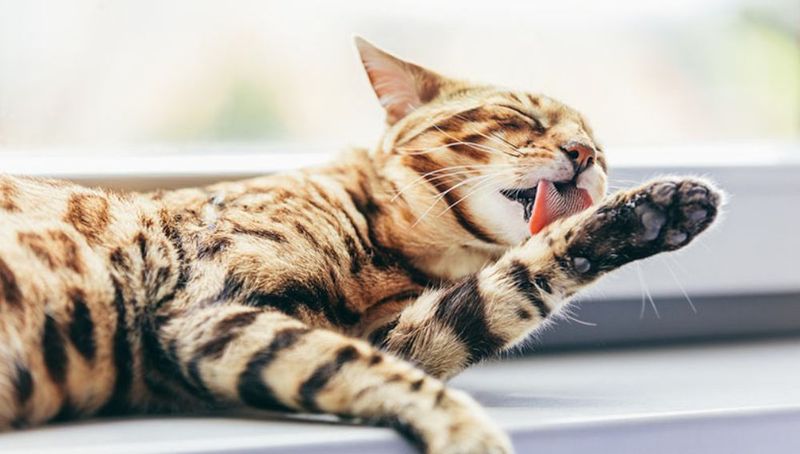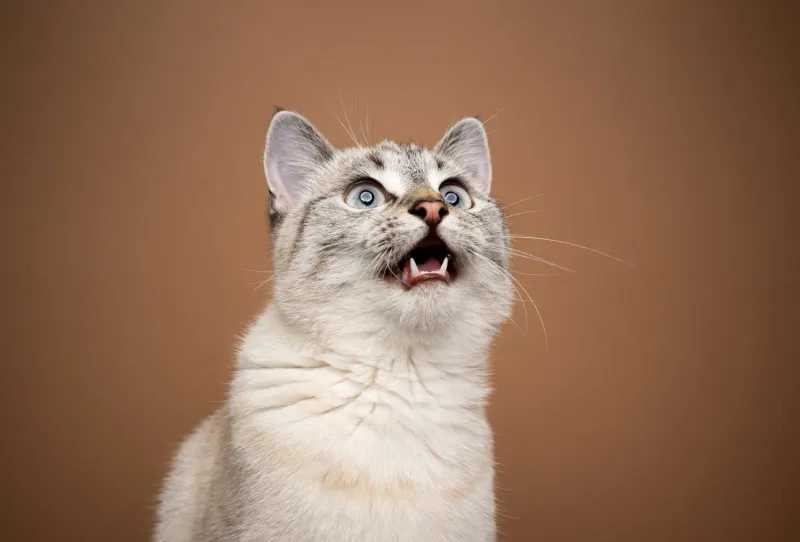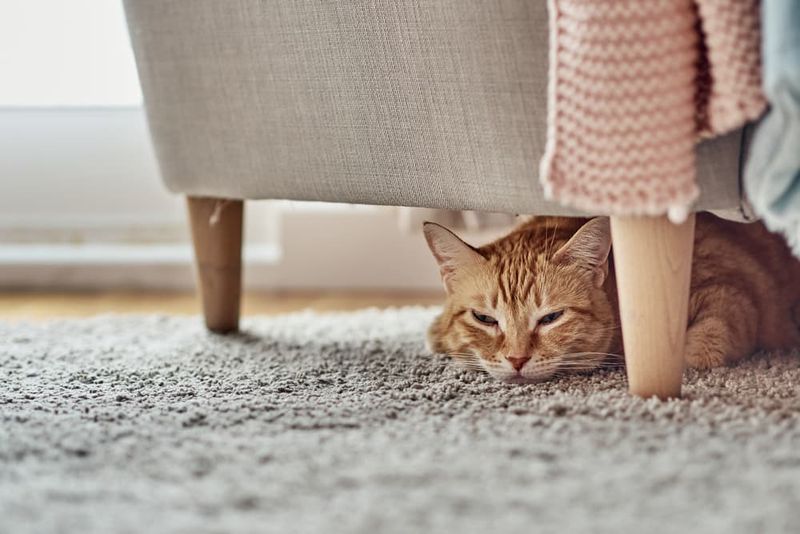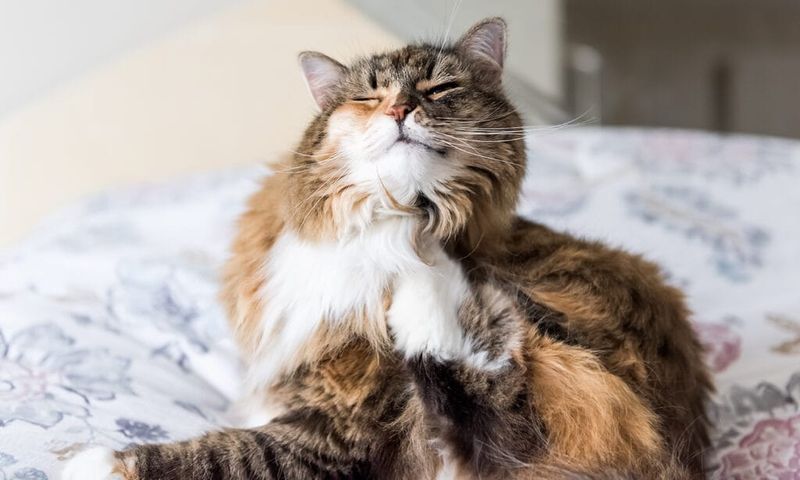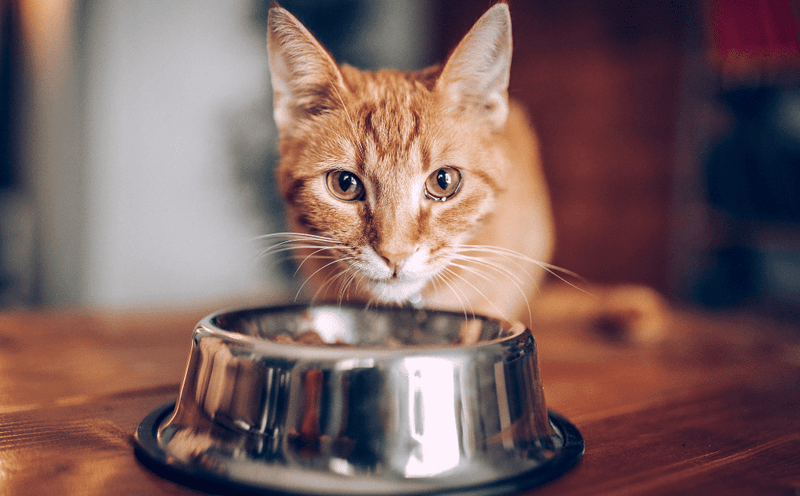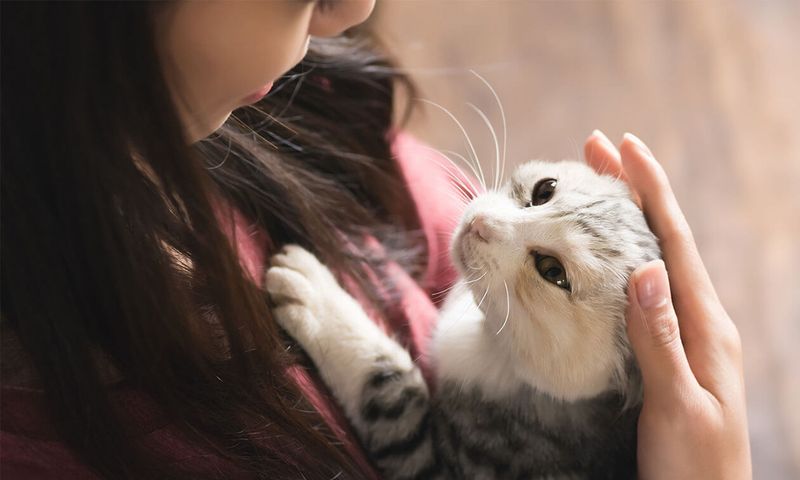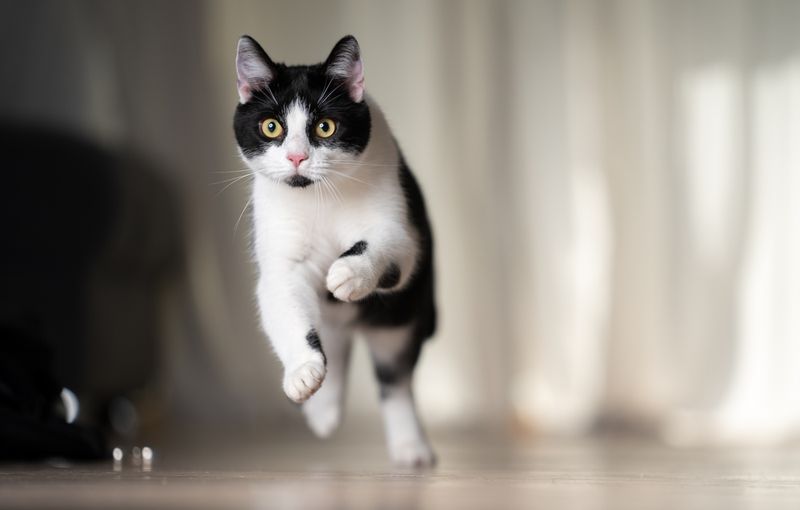📖 Table of Content:
Cats are fascinating companions, full of charm and mysterious habits. Their quirky behaviors often bring joy, but not all actions are as harmless as they seem. What looks cute at first glance may actually signal a deeper issue.
Certain feline behaviors can serve as subtle cries for help. From changes in routine to unusual grooming patterns, cats often communicate through their actions. Spotting these signs early can make a big difference in their well-being.
Recognizing the difference between playful quirks and potential red flags is essential. Some habits may point to discomfort, stress, or health concerns. Paying attention to these small details helps ensure a happy, healthy life for any feline friend.
1. Excessive Grooming
Your cat may spend a lot of time licking its fur, covering every spot with careful attention. Although this can seem like normal grooming behavior, doing it too often may point to a problem. When grooming becomes excessive, it can be a sign of stress, anxiety, or even skin irritation and allergies..
In some cases, cats might groom to the point of creating bald spots, which is a definite red flag. Monitoring your cat’s grooming habits and consulting a vet if it seems excessive can prevent more serious health problems. Keep an eye on their behavior and act accordingly.
2. Sudden Aggression
A gentle purr turns into a hiss, and suddenly, your once-docile feline becomes aggressive. This abrupt behavior change can be alarming and often points to discomfort or pain. Sometimes, it might be as simple as a dislike for a new environment, but sudden aggression could also indicate an injury or illness.
Recognizing this shift is vital, as cats often hide their pain. Observing any accompanying signs and seeking professional advice can help ensure your cat’s well-being. Always approach with care and consider potential causes for such unexpected hostility.
3. Constant Meowing
Frequent meowing can be more than a personality trait—it may signal a deeper issue. Cats often vocalize when they’re anxious, hungry, or unwell. Persistent sounds might even point to underlying health problems such as hyperthyroidism.
Understanding the context and pitch of the meow can offer clues. If the frequency increases or becomes more persistent, it’s wise to consult a veterinarian. Listening attentively ensures that you respond to your cat’s needs appropriately.
4. Hiding More Than Usual
Cats love their private space, but when hiding becomes excessive, it may be a sign of distress. A cat that suddenly seeks solitude might be experiencing stress, fear, or illness. This behavior, while seemingly innocent, often indicates that something is amiss.
Pay attention to any changes in their environment that may have triggered this response. Consulting a vet to rule out medical issues can be a prudent step. Ensuring a safe and comfortable environment may coax them back to their usual, sociable selves.
5. Increased Scratching
It’s natural for cats to scratch, but doing it excessively can be their way of coping with frustration. A cat that suddenly targets furniture or walls may be trying to deal with anxiety or an unsettled environment. This behavior often points to an emotional trigger.
Providing appropriate outlets, like a scratching post, can help alleviate this behavior. Monitoring changes in your home environment and ensuring your cat feels secure and engaged can also prevent destructive scratching. Understanding the root cause of increased scratching can lead to a happier, healthier pet.
6. Lethargy and Disinterest
A playful kitten turning into a lethargic cat might seem like a normal transition, but it can suggest underlying health issues. Cats naturally sleep a lot, but if your feline friend seems unusually disinterested in activities they once loved, it could be a sign of depression or illness.
Monitoring their eating habits, energy levels, and general demeanor can provide insights into their health. Consulting a vet to rule out medical issues is wise. Encouraging play and interaction can sometimes reignite their zest for life.
7. Changes in Eating Habits
An empty bowl at mealtime might be replaced by untouched food, signaling a change in your cat’s eating habits. This can be an early indication of dental problems, digestive issues, or stress. While cats can be finicky eaters, sudden changes in appetite should not be ignored.
Pay attention to any accompanying weight loss or gain, and consider consulting a vet for a thorough examination. Ensuring the food is fresh and appealing can also make a difference. Understanding these changes can maintain your cat’s health and happiness.
8. Overly Affectionate Behavior
Though affection is part of a cat’s charm, constant attention-seeking may point to emotional distress. Clingy behavior can result from stress, sudden change, or even hidden medical problems. Monitoring this shift is important to understand what your cat may be experiencing.
While the extra cuddles might seem endearing, it’s essential to observe any other changes in behavior. Providing a stable routine and ensuring their environment is calm can help. Recognizing when affection crosses into obsession is key to understanding your cat’s needs.
9. Nighttime Hyperactivity
The pitter-patter of paws racing across the room at midnight can be charming yet disruptive. Nighttime hyperactivity might seem like typical cat behavior, but it can also indicate boredom or insufficient stimulation during the day.
Creating a more engaging environment with toys and playtime can help curb this habit. If the behavior persists, it might be worth exploring underlying health concerns. Understanding and addressing the causes of nighttime antics can lead to more peaceful nights for both you and your feline friend.
